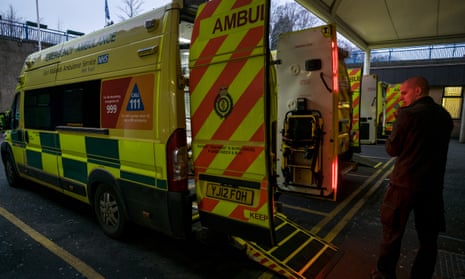One in six A&E departments face being closed or downgraded in the next four years, according to an analysis of NHS proposals.
About 33 casualty departments in hospitals in 23 areas of the UK are facing either complete closure or being replaced with minor injuries units.
The plans are part of efforts to plug a £22bn hole in the health service budget by 2021. Health officials insist the changes will come alongside efforts to modernise services and increase specialist urgent care.
In seven cases, proposals have been drawn up, some of which have been issued for local consultation. According to research by the Health Service Journal (HSJ), 26 more hospitals are now considering plans to close or downgrade services but no final decision has been made.
The seven hospitals for which there are public proposals to downgrade or close emergency departments include Sandwell and West Birmingham hospitals trust’s City hospital and Sandwell district general hospital, which are due to be replaced by a new department at the Midland Metropolitan hospital that is scheduled to open in 2018.
The remaining 26 hospitals may have their A&Es downgraded or closed but, equally, they could be kept or upgraded. Decisions are expected to be made between either Shrewsbury or Telford, Bedford or Milton Keynes and Darlington memorial hospital or the University hospital of north Tees.
In total, about 24 of the 33 hospitals under discussion are likely to lose full A&E services, the HSJ said.
The news comes at a time when hospitals are under severe strain. Almost half of NHS trusts declared a major alert in January and record numbers of hospitals have diverted ambulances to other hospitals. The number of life-saving operations cancelled at the last minute has also reached a new high, with more than 4,000 put on hold last year.
An NHS spokesman said: “The number of people seeking urgent care is on the rise so overall we expect the range of services available to them to expand over coming years. Within that overall expansion, it may be possible to improve care and save lives with some concentration of specialist urgent services.”
He said he did not expect significant numbers of A&E changes in the years ahead, with one of the decisions – concerning Sandwell and City hospitals – taken some years ago.
Annual figures show the number of patients stuck on trolleys in A&E units for more than 12 hours has doubled in two years, with a tripling in cases among the elderly.
It has been claimed that one woman died of a heart attack after waiting for 35 hours on a trolley at Worcestershire royal hospital. The hospital’s A&E department has become overwhelmed so often that it has diverted ambulances to other units on 44 occasions since December. Yet the hospital is at the centre of plans by its trust to centralise A&E services and downgrade Alexandra hospital in Redditch.
The King’s Fund’s director of policy, Richard Murray, told the HSJ that the NHS appeared to be “caught betwixt and between”. The number of potential downgrades, he said, “is not high enough to conclude we are seeing a radical redrawing of urgent and emergency care, but it is high enough to suggest a lot of political noise and require a lot of potentially noisy public consultations”.
In November, the Labour leader, Jeremy Corbyn, who grew up in Shropshire, spoke out against plans to close either the emergency department in Shrewsbury or in Telford in what has become a bitter issue locally.
He said: “I want to make sure there are proper A&E facilities across Shropshire. I grew up in Newport and I remember the discussions about opening those A&E departments in the first place. There need to be A&E departments in reasonable reach of everyone’s homes so that, obviously, emergency cases can be dealt with quickly.”
Chris Moulton, vice-president of the Royal College of Emergency Medicine, told the Telegraph the plans were crazy. He said: “Hospitals are under massive pressure, it’s now horrendously common to have 12-hour trolley waits and in some cases 30-hour waits in A&E. The NHS has been desperately short of capacity for the last few years – it’s crazy to close A&E units when there simply isn’t capacity to cope with these patients elsewhere.”
Meanwhile, separate analysis by the BBC has found that the number of people facing longer waits than they should for hospital treatment in England has more than doubled since 2012.
A key target waiting time of 18 weeks is not being met for more than 350,000 patients, resulting in a 163% rise over four years, it was found. The total number of people on the waiting list is 3.7 million. Figures for Wales and Northern Ireland provided by the Royal College of Surgeons show they have also seen a rise.
